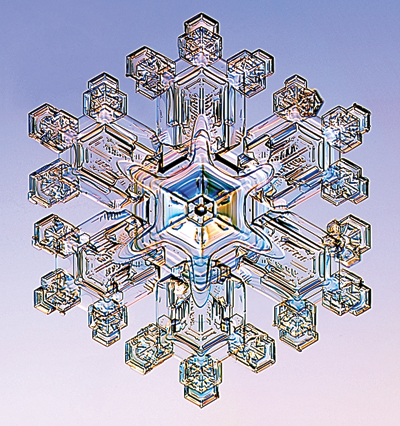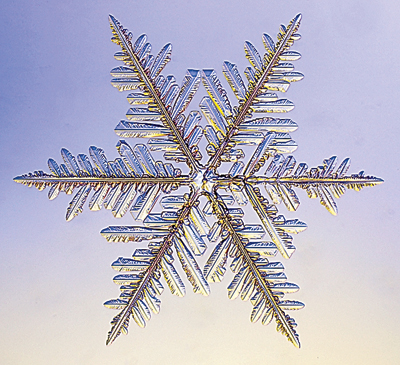

Snowflakes 101
Defining a snowflake ain’t as easy as it used to be.
A little clarification is called for before we delve into one of nature’s greatest riddles – is it true that no two snowflakes are identical?
In past years, the word, “snowflake,” had only one meaning in the English language, “one of the small feathery masses, or flakes, in which snow falls.” Snow-flake was a noun according to all but the most recently published dictionaries.
Now, thanks to both politics and the proliferation of insulting language on social media, snowflake has meanings other than the frozen crystalline structures we either hate or love.
In short, “snowflake” is also defined as “A person who is easily offended or overly sensitive.”
So, if you have been called a snowflake, do not take umbrage at the offender. It just means that, like a snowflake, you are one of a kind, unique.
Unless, of course, you are easily offended or overly sensitive.
Then, you may want to visit a turbulent third-world country, say, Haiti or Somalia. No guarantees, but your fragility may melt away like a real snowflake when you see the inescapable horror and misery that some people wake up to daily.
And, as a bonus, you may see the world, and our small place in it, through a new set of eyes.
Back to real snowflakes, nature’s ostentatious display of beauty and geometry.
How snowflakes develop, and what science has yet to learn about their formation.
We’ve heard so much from others that we probably also parrot the phrase, “No two snowflakes are alike.” As it turns out, that improbable statement is true, but do we really know why?
You’re about to know, at least as much as science currently understands, about the beautiful and enigmatic snowflake.
First, as we all know, liquid water evaporates from the Earth’s surface as vapor and rises into the atmosphere, where it condenses.
The vapor encounters colder and colder air as it rises into the atmosphere. When it reaches a specific temperature, it condenses into water droplets. But, becoming a snowflake requires a nucleus, usually a bit of dust or pollen.
Then, and only then, the frozen droplets attract other water molecules until they form into a hexagonal (six-sided) plate. These minute multi-faceted ice flakes are called diamond dust, such as that found in light pillars, another atmospheric phenomenon.
A hexagon offers many advantages in a snowflake’s architecture because of its shape. It provides more surface area, most importantly, the six corners for branching and complexity.
(Bees also find the hexagon shape advantageous in storing honey, as do grocers when they stack oranges for display.)
Once formed, the plate encounters varying temperatures and collisions with other water molecules as it falls to Earth. This variability allows for the dendritic (tree-like branches and needles) shapes we are familiar with.
As the snowflake falls, its shape is in constant flux due to combining and recombining with other water molecules and various temper- atures and humidity.
Because of this, the potential design of any given snowflake is infinite, bringing us to the mystery that science is still pondering. The variability allows for an unfathomable number of structural combinations, twice the staggering number of atoms in the universe, some 10 to the 78th power.
It is understandable that higher humidity, bearing more water molecules, offers the potential for more snow-flakes. But why is the snowflake design more intricate when it encounters super-cold temperatures?
There are lots of theories, but, as yet, no consensus.
As for the frequently heard statement that no two snowflakes are alike, science does offer a viable explanation.
I always scoffed at the idea that in the entire history of our Earth, 4.6 billion years, none of the countless snow-flakes that have fallen from the sky were identical.
But I was wrong; at least if you believe in mathematics. And you better believe in the science of numbers. The technology you currently use and rely on would not exist without mathematics.
Snowflakes may be identical in mass and size but not in shape.
In a single snowflake, there are millions, sometimes trillions, of water molecules, depending upon size. Among all those water molecules, there is a small percentage of them that are different in composition.
The hydrogen in these rogue water molecules contains an extra neutron called deuterium or heavy water. And these deuterium molecules are heavier and bond differently than normal water molecules, allowing for even greater potential for differences in shape.
The deuterium molecules provide so many possibilities that it is nearly impossible that any two snowflakes that have ever fallen are identical.
It’s all just a matter of odds! And the odds favor no two snowflakes being identical.
Now, a bit of snowflake trivia.
Who first figured out how to successfully photograph a snowflake?
The notion that no two snowflakes are alike is credited with a Vermonter named Wilson Bentley, aka “Snowflake” Bentley. He was a late 19th-century farmer/meteorologist who, after many attempts, photographed snowflakes.
As a budding young scientist, Bentley said, “…from the beginning; it was the snowflakes that fascinated me most.” We have Bentley’s passion and persistence to thank for the first photographs of snowflakes and much of what we know about them.
Bentley’s first successful photograph of a single snowflake took place on January 15, 1885, but not without hundreds of previous failed attempts.
The problem in photographing the ephemeral and fragile snowflake is that microscopes require light which produces heat, melting the snowflake.
So, how did Bentley do it?
Bentley finally succeeded by carefully catching a single snowflake on a black piece of cloth and transferring it to a feather. By leaving the microscope and camera outside where its temperature would equilibrate with the outside ambient temperature, he carefully placed the crystal under the lens with his feather and the rest is history.
In his lifetime, Bentley photographed more than 5,000 dendritic snowflakes. After careful scrutiny of each photograph, he concluded that no two were identical. Much later, his theory would be validated in full by science.
“Under the microscope, I found that snowflakes were miracles of beauty; and it seemed a shame that this beauty should not be seen and appreciated by others. Every crystal was a masterpiece of design and no one design was ever repeated.
When a snowflake melted, that design was forever lost. Just that much beauty was gone, without leaving any record behind.” Wilson Alwyn Bentley.
Thank you, Mr. Bentley, for leaving your magnificent photographic record behind.
Why is snow white?
Well, you probably know that all combined colors result in white, which technically is not a color.
Because snow is comprised of millions of tiny multi-faceted crystals, all reflecting light, it appears to the human eye as white. Yet, the crystals themselves are clear.
What is the largest snowflake on record?
In January 1887, near Fort Keogh in Montana, a rancher named Matt Coleman found and measured a colossal snowflake.
Imagine a snowflake landing on your nose that is 15 inches long and 8 inches thick. That’s how big Coleman’s snowflake was.
How did the German astronomer, Kepler, contribute to understanding how snowflakes form?
Johannes Kepler, the 17th Century astronomer, and an important figure in the Scientific Revolution, found snowflakes fascinating enough to compose a small book on the subject.
His composition was the first known scientific reference to snowflakes.
Kepler famously presented his 24-page treatise to his friend and scholar, Johannes Matthaus Wackher von Wackenfels, as a New Year’s gift.
(Imagine introducing Wackenfels to all of your friends at a New Year’s party, what a mouthful!)
Wackenfels was delighted to receive this insightful introduction to the snowflake and its endlessly varying symmetry.
And, finally, what is the largest recorded snowfall in West Virginia?
That would have been in November 1950 when 55.5 inches of snow fell over a period of four days in an area several miles southwest of Elkins.
That would not qualify for bragging rights in Buffalo, New York, or Colorado, but it is a lot of the beautiful crystalline structures we call snowflakes.
In next week’s For Your Consideration, we explore the fascinating world of ice; including some new theories about ice structures that may be encountered in the cosmos.
Happy New Year to all,
Ken Springer
Ken1949bongo@gmail.com



